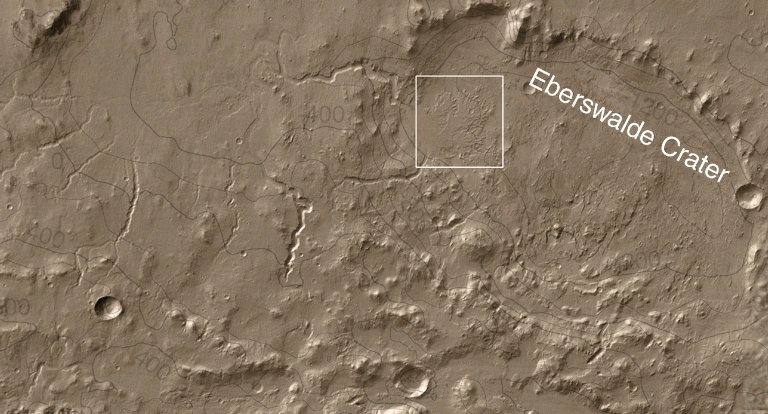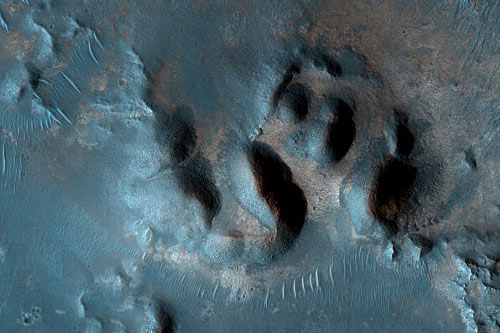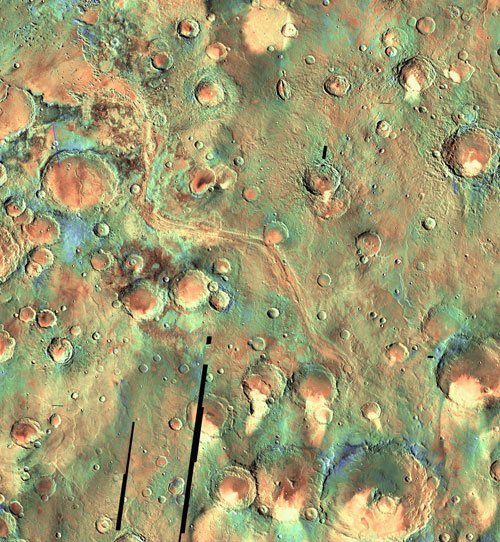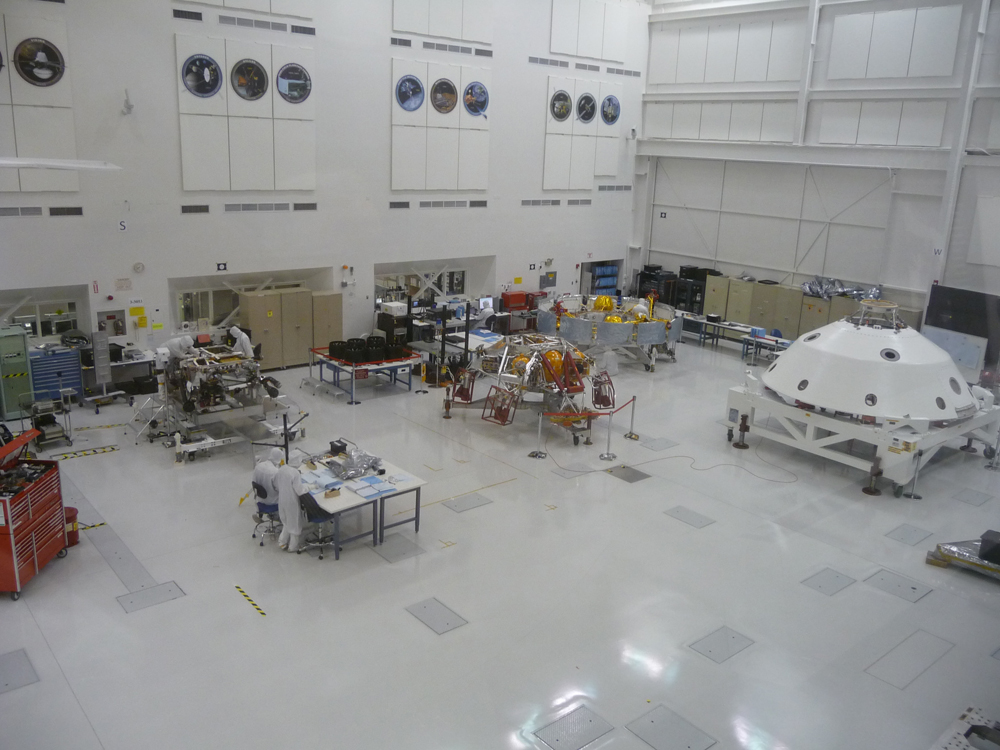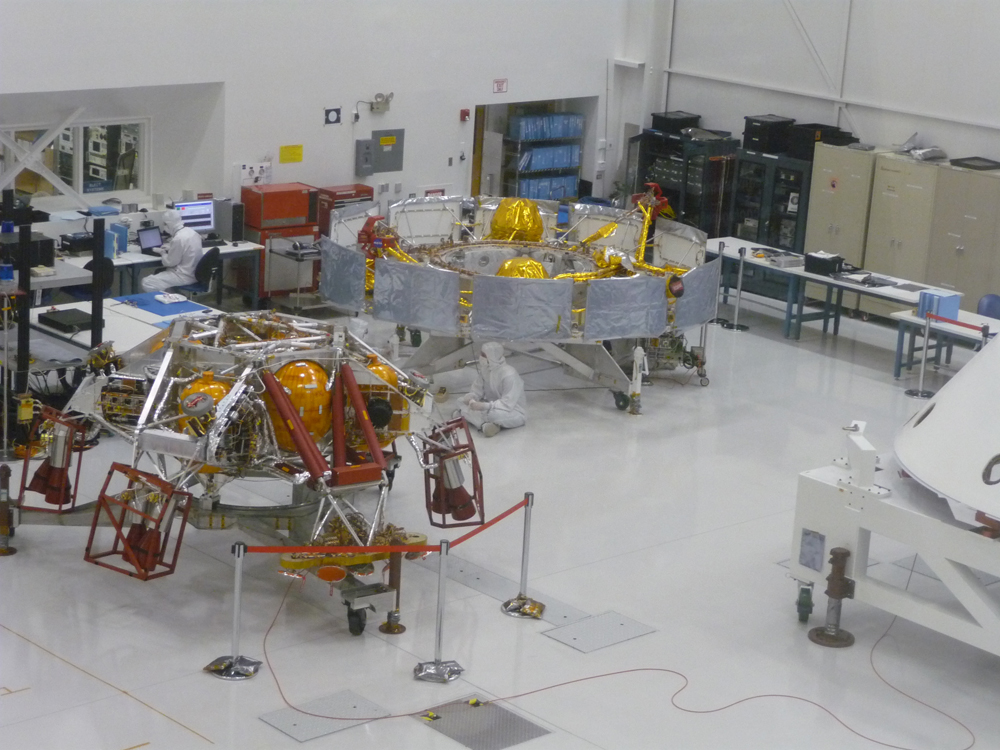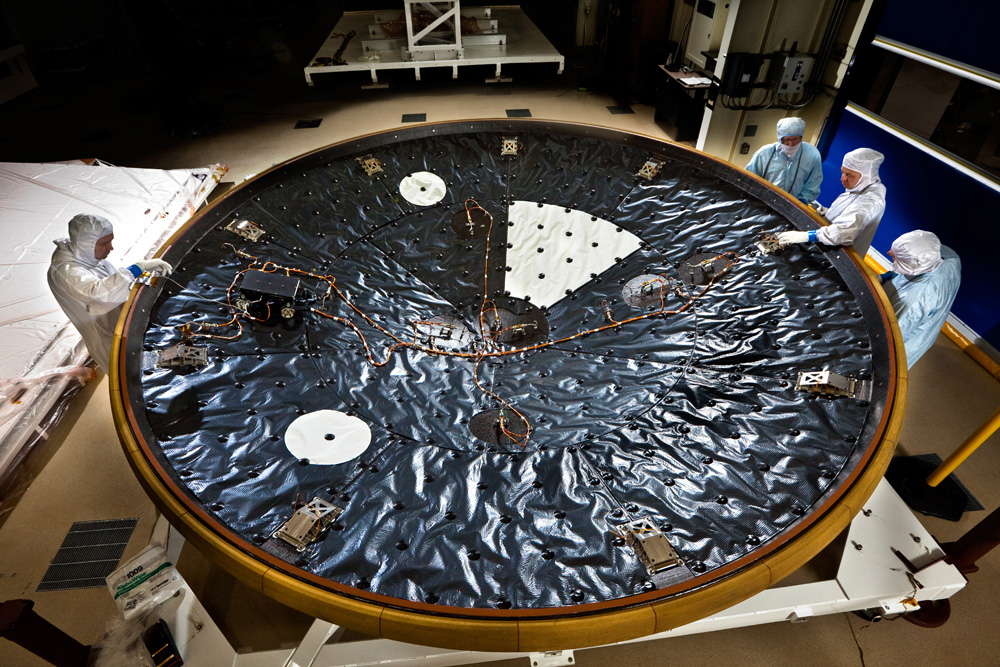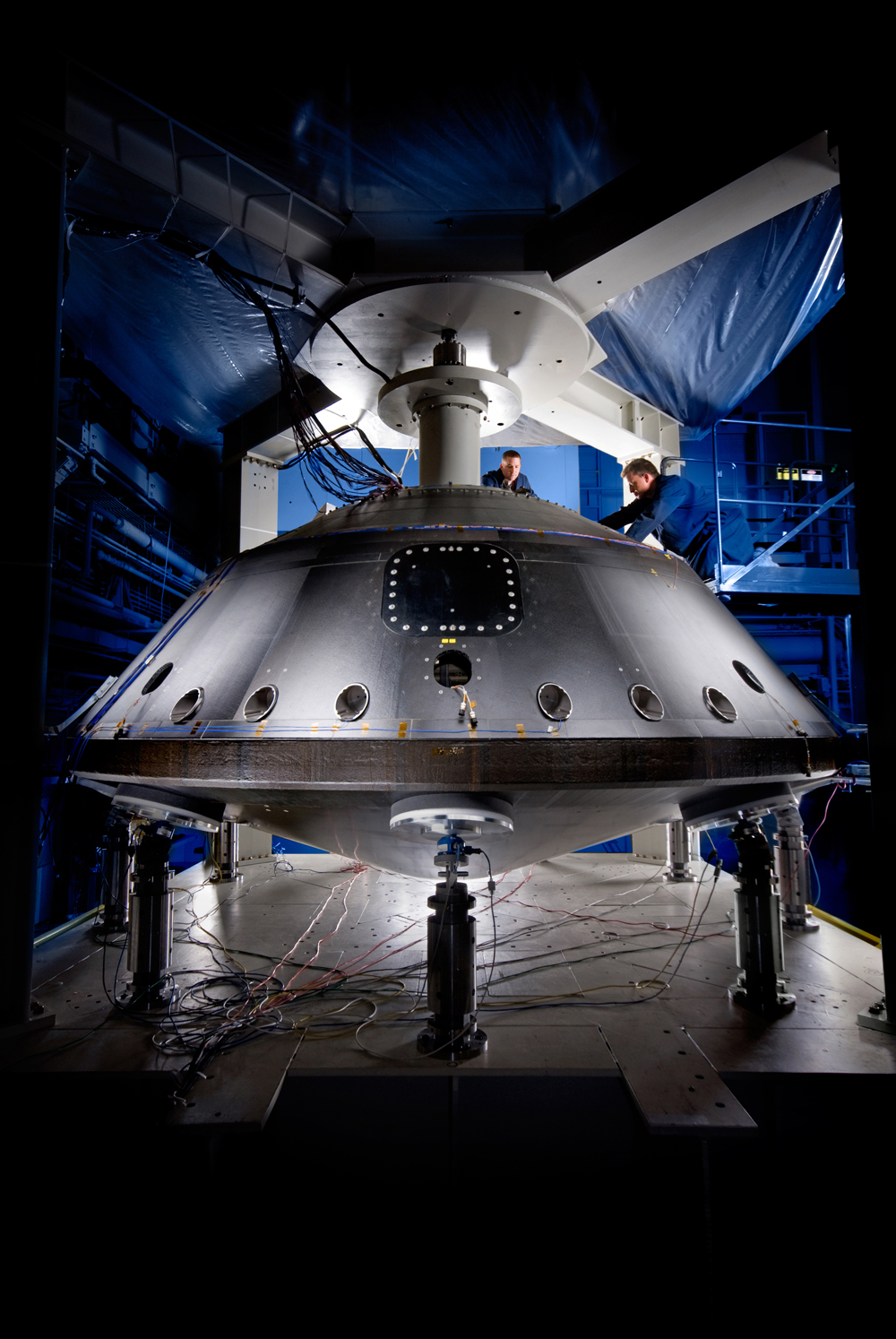Photos: Curiosity Rover, NASA's Mars Science Laboratory
Four Finalist Landing Site Candidates for Mars Science Laboratory
Out of more than 30 sites considered as possible landing targets for NASA's Mars Science Laboratory mission, by November 2008 four of the most intriguing places on Mars rose to the final round of the site-selection process.
Eberswalde Delta
At this site in Mars' southern hemisphere, an ancient river once flowed into a lake. The area abounds with phyllosilicates, clay-like minerals that preserve a record of long-term contact with water. Here on Earth, oil geologists have built up a store of knowledge about how to look for organic materials in river deltas. Mission scientists and Curiosity may be able to tap into that knowledge in operations at Eberswalde.
Gale Crater
Gale Crater, which is near the Martian equator, offers access to a wide range of rock strata, including sulfates and phyllosilicates in a mountain three miles (5 kilometers) high. Curiosity could probably drive partway up this mountain, checking out layers deposited during wet periods with changing environmental conditions.
Curiosity Mars Rover and Sky Crane
This artist's concept depicts a sky crane lowering NASA's Curiosity rover onto the Martian surface.
New Images Used to Pick Mars Lander Site
The Nili Fossae region of Mars is one of the largest exposures of clay minerals discovered. In this HiRISE false-color image, dark blue regions are volcanic minerals. Light-toned areas are clay-rich material and may contain water and organic materials--a possible place where life can be supported.
Mawrth Vallis
This apparent flood channel in the Martian southern hemisphere is one of the oldest valleys known on the Red Planet. Its layered terrain contains several different types of clays, giving Curiosity the chance to study changes in wet conditions over the eons. This is the only one of the four landing sites that possesses interesting geology for the rover to check out. At the other three, the study areas are outside the landing zone, requiring the rover to make more of a drive before starting its science work.
Pieces of NASA's Mars Science Laboratory mission at JPL
Pieces of NASA's Mars Science Laboratory mission at the Jet Propulsion Laboratory in May 2011. From left: the Curiosity rover (along rear wall; its tires are on a table to the rover's right), the entry-descent-landing stage, the cruise stage and the backshell.
Breaking space news, the latest updates on rocket launches, skywatching events and more!
Mars Science Laboratory entry-descent-landing system and cruise stage
A close-up of the Mars Science Laboratory mission's entry-descent-landing system (foreground) and cruise stage, in a clean room at NASA's Jet Propulsion Laboratory in May 2011.
MEDLI instruments installed on MSL heat shield
Technicians at Lockheed Martin in Denver finalize the installation of the MEDLI instrument package on the backside of the Mars Science Laboratory's heat shield.
Readying the aeroshell for NASA's Mars Science Laboratory mission
The huge aeroshell for NASA's Mars Science Laboratory mission is readied at Lockheed Martin Space Systems near Denver.

Space.com is the premier source of space exploration, innovation and astronomy news, chronicling (and celebrating) humanity's ongoing expansion across the final frontier. Originally founded in 1999, Space.com is, and always has been, the passion of writers and editors who are space fans and also trained journalists. Our current news team consists of Editor-in-Chief Tariq Malik; Editor Hanneke Weitering, Senior Space Writer Mike Wall; Senior Writer Meghan Bartels; Senior Writer Chelsea Gohd, Senior Writer Tereza Pultarova and Staff Writer Alexander Cox, focusing on e-commerce. Senior Producer Steve Spaleta oversees our space videos, with Diana Whitcroft as our Social Media Editor.

